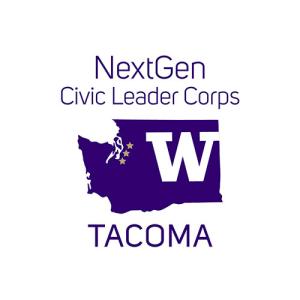
4 Ways to Evaluate a Professional Development Certificate
From online, for-profit companies to state-run universities, there are a growing number of educational offerings outside of the traditional, degree-based structure of higher education. So how do you evaluate a professional development certificate?
Recently, the Hechinger Report, a nonprofit newsroom that covers issues related to inequality and innovation in education, released a report about the challenges of continuing education credentialing. From online, for-profit companies to state-run universities, there are a growing number of educational offerings outside of the traditional, degree-based structure of higher education.
“Skills-based and non-degree credentials are essential to have as you grow in your career,” noted Christopher Cellars, Executive Director of UW Tacoma’s Professional Development Center (UWT PDC). “We’re excited to offer both cutting edge skills and academic integrity to our students – even as we expand how we recognize a student’s achievements from stackable certificates to short workshops. When a prospective student is evaluating continuing education options, they should consider the quality of the program and the reputation of the provider.”
Cellars and the PDC staff suggest four ways to determine the value of a professional development program:
What kind of credit do you want or need?
If you are looking for a program that will help you get a specific job or to meet an industry requirement, you must understand what type of credit will help you achieve that goal. Look at what experience and qualifications show up in job listings or are held by colleagues in your desired position. Is a formal PMP (Project Management Professional) certification required or just strong project management skills? Is your pay and promotion scale based on earning academic credits or accumulating contact hours and CEUs (continuing education units)?
From there, you can look for programs that meet your needs. While there are many different definitions for types of professional development credit, here is how the UWT PDC distinguishes terms:
-
Certification or Designation: Anyone can call their program a “certification” or “designation,” but a true certification is issued by a third-party organization with an established body of knowledge (ASQ, SHRM, PMI, NCPMC, etc.). There is often an exam and/or significant project outside of coursework and continuing education requirements.
-
Certificate Program: At the PDC, a Certificate Program is typically a multi-course program with more than 90 contact hours. Earning a Certificate indicates the participant has demonstrated that they have developed both skills and knowledge – not just attended all the class sessions.
-
Certificate of Completion: Certificates of Completion/Attendance can be issued for any course and indicate a participant met all attendance and/or assignment requirements.
-
CEU: Different organizations calculate Continuing Education Units (CEUs) differently. In the PDC, 1 CEU generally equals 10 contact hours.
-
Contact Hours: For traditional programs, this is just classroom time. For technology-assisted, hybrid, and fully online programs at the PDC, contact hours often include readings, videos, activities, and other asynchronous work that substitutes for class time.
How will you be learning?
Regardless of whether the course is in-person, virtual, or on-demand, project-based learning will provide you with the opportunity to put your learning into action. It will also give you real-life experience that you can apply to your current work or share at an upcoming review or interview.
Who will you be learning from?
Qualified instructors are essential. Looking for industry-specific professionals who also enjoy teaching and sharing their knowledge will make a dramatic difference in the depth of study and the potential for networking connections.
How was the program created?
Instructional design is the creation of learning experiences and materials in a manner that results in the acquisition and application of knowledge and skills. This systematic development of instruction involves design, development, delivery, and assessment. PDC staff works intensively with instructors to ensure that programs offered by the University of Washington Tacoma translate their content for maximum impact.
“You want to make sure that you are getting value – and recognition – for the work you put into learning more. As a University of Washington department, the Professional Development Center certificate programs are taught by leading professionals in their industry but are also vetted and approved by the academic schools,” said Cellars.
For more information about UW Tacoma’s Professional Development catalog contact us at uwtpdc@uw.edu or visit our website at www.uw.tacoma.edu/pdc
Reference Material
https://www.seattletimes.com/explore/careers/growing-maze-of-education-credentials-confuses-job-seekers-employers/



